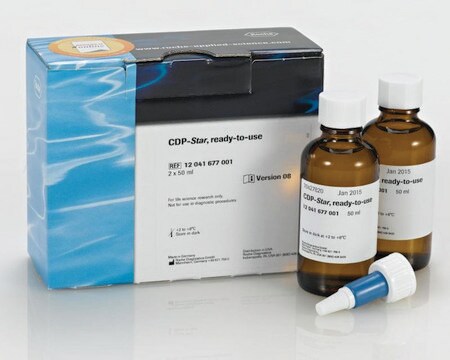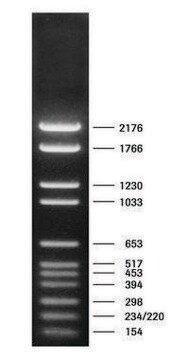11218603910
Roche
DNA Molecular Weight Marker III, DIG-labeled
10 μg/mL, pkg of 500 μL (10 μg/ml), solution
Synonym(s):
DNA marker
About This Item
Recommended Products
form
solution
Quality Level
packaging
pkg of 500 μL (10 μg/ml)
manufacturer/tradename
Roche
greener alternative product characteristics
Designing Safer Chemicals
Learn more about the Principles of Green Chemistry.
sustainability
Greener Alternative Product
concentration
10 μg/mL
color
colorless
solubility
water: miscible
greener alternative category
storage temp.
−20°C
General description
Application
Features and Benefits
Sequence
Note: Fragment lengths are derived from computer analysis of the DNA sequence. Depending on the size range of the marker, the smallest fragments will only be visible on overloaded gels.
Other Notes
Storage Class Code
12 - Non Combustible Liquids
WGK
nwg
Flash Point(F)
No data available
Flash Point(C)
No data available
Choose from one of the most recent versions:
Already Own This Product?
Find documentation for the products that you have recently purchased in the Document Library.
Articles
Digoxigenin (DIG) labeling methods and kits for DNA and RNA DIG probes, random primed DNA labeling, nick translation labeling, 5’ and 3’ oligonucleotide end-labeling.
Global Trade Item Number
| SKU | GTIN |
|---|---|
| 11218603910 | 4061838699770 |
Our team of scientists has experience in all areas of research including Life Science, Material Science, Chemical Synthesis, Chromatography, Analytical and many others.
Contact Technical Service





